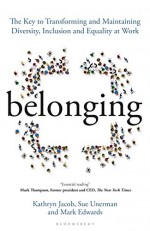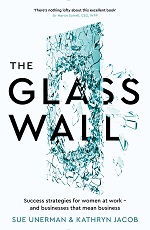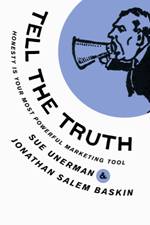 Football: a beautiful game and a business.
Football: a beautiful game and a business.
If there were more women involved in football at senior levels there would be better performance.
When there are more women involved in senior management of businesses there is better performance.
Is football really that different?
There’s plenty of research into the benefits of gender balance for business. In one recent study Grant Thornton has measured the discrepancy between the profitability of mixed boards and men only boards for listed companies in the USA, India and Great Britain and declared that the former are significantly better. By $655bn. It’s well established that diversity delivers better judgement and better decisions at a senior level that benefits business.
Football is business as well as the beautiful game. Ronaldo has just become the first footballer to earn a hundred million euros. So big big business. Some more diversity at the top seems like it’s overdue.
Graeme Souness writes that the future for improved international performance for England is club partnerships. (6 of the players in the sign that gained victory over Scotland last week were from Liverpool and Spurs). He says that it creates an understanding on the pitch, and that the existing friendships boost morale. Sounds like the kind of thinking that women are said to bring to board rooms.
Where are the women in football boards?
There’s just one woman chair of a premiere league side. And another one in the championship. Less than ten percent of the boards of the premiere league are women.
Where are the women on the training ground and on the pitch?
There’s nearly nine and a half thousand UEFA football coaches. Sixty-five are women. There aren’t any women referees in the English Football League (unlike the Bundesliga and Italian league).
Women in Football is an association that exists to challenge the status quo in the sport, and not just for women footballers, but for all the women working in the sport. Last week, as co-author of The Glass Wall, success strategies for women at work, I was invited on to the panel of an event chaired by Jo Tongue alongside Sue Ferns of Prospect, Simone Pound PFA head of equalities and League Managers Association CEO Richard Bevan to discuss sexism in the workplace.
The discussion was subject to Chatham House Rules so must remain undisclosed. However the statistics of gender equality are stark and the Women in Football association, which is doing great work, deserves and needs our support.
It wouldn’t be difficult to measure the benefits of a better gender balance in senior management at the top level of top clubs. It’s a business that gets a result every week in the season. How could such a results based business be so slow to try new management? At international level it’s not as if England, or Scotland has been doing so well in tournaments that you’d think “let’s not change anything here, we’re doing so well”.
Do the statistics in senior management and the culture in the game appear similar to those that led to the formation of WACL, the women’s advertising club? Great strides have been made since its foundation in 1923. WACL exists so that its exclusive membership can inspire, support and network with each other. Women in Football would benefit considerably from the lessons that WACL has learned over the last few decades in particular, of standing up to the sacred cows of established practices and negotiating skilfully and successfully for change. Women of WACL – the beautiful game and WiF need your support.






Lessons from out of this world.
Monday, November 28th, 2016He flew on two space shuttle flights and made an extended 6 month stay on the International Space Station.
He left NASA and joined Google to run its advanced projects unit, and now runs the B612 Foundation which protects the earth from asteroids and other objects that might collide with us. He’s highly qualified to deliver lessons learned in space but applicable for business. What a great key note speaker. Out of this world.
Lu’s only colleague whilst he lived on the International Space Station was a Russian cosmonaut Yuri Malenchenko. Just the two of them, in an extremely small space but with an awesome view out of the window including of dozens of sunsets a day.
One of the first things they established was ways of working together. Clearly they had different reporting lines. One to Houston and one to Moscow. Their two managers were unlikely to be totally aligned on every decision. Lu said that they both had to be very clear to their managers that they would in every case refuse to act on anything where there was conflict and would not resolve the politics inside the space station. Houston and Moscow had to reach agreement first. A great example to follow when there’s issues to be resolve within matrix management at work. Or if you’re meant to be in a cross agencies team but the client seems to be saying one thing to one set of management and another thing to the other. Don’t try and resolve this yourself, it will just lead to unsatisfactory compromise and mediocre work, and possibly despondency. Send the issue back up the line to the client stakeholders and get them to resolve it before you act. Never take a job if the management you speak to in the interview process seem to be unaligned. If the overall CEO tells you that the business needs to change completely, but your prospective immediate boss wants you to transform a small silo, don’t take it any further until they are clearly in agreement. However attractive the job sounds in theory, it will be impossible to deliver and it will make you miserable.
One other big lesson that he brought back to earth was never to micro-manage from afar. Clearly any astronaut is working with very expensive equipment and needs to make crucial decisions fast and in real time. The temptation to micro manage from earth must be enormous. And must be entirely resisted according to Lu. If you’re working with people you have trained, you must then trust their training and experience.
The best state for any astronaut, he went on, is to be an optimist but to prepare for the worst.
With the uncertainty both in the world at large and in the media industry in particular in 2017 this seems like a good goal for every media person.
Look on the positive side, be open to change and disruption, yet always be ready for the worst outcome. Don’t get ambushed by tough circumstances, spend quality management time considering contingency planning. For the brands you work on, for the company you work for, for your own development. Then, certainly, hope for the best.
The Marketing Soc conference was a good stimulating day, and I am hoping for the best for it in 2017. I hope that there is less of a #GlassWall feeling about the day. Women on the stage were by far in the minority this year. It was remarked on by many of the audience during the breaks. I am optimistic that this will change next year.
Posted in MediaComment | No Comments »